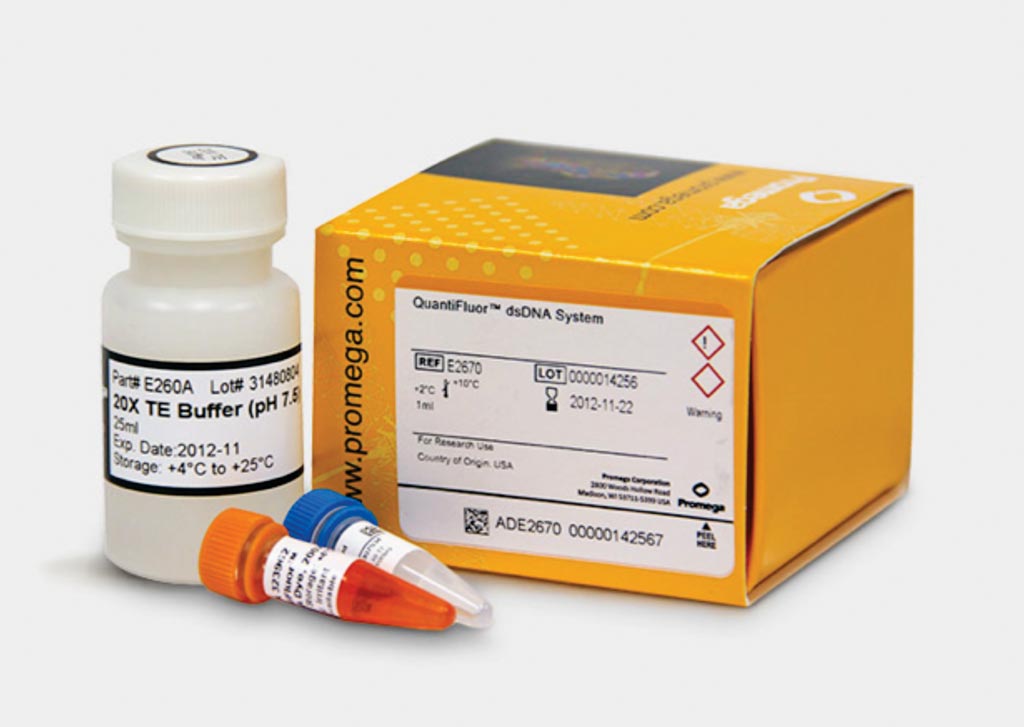Bacterial Composition Linked to Breast Cancer
By LabMedica International staff writers
Posted on 19 Oct 2017
Breast cancer is the second most common cancer in women (after skin cancer) in the USA, where one in eight women will develop the disease in their lifetimes. Bacteria that live in the body is known as the microbiome, and influence many diseases.Posted on 19 Oct 2017
Most studies have been done on the "gut" microbiome, or bacteria in the digestive tract. Scientists have long suspected that a "microbiome" exists within breast tissue and plays a role in breast cancer, but it has not yet been characterized. Recently they have uncovered differences in the bacterial composition of breast tissue of healthy women versus women with breast cancer.

Image: The Quantiflour dsDNA system for sensitive quantitation of double-stranded DNA in solution (Photo courtesy of Promega).
Scientists at the Cleveland Clinic (Cleveland, OH, USA) examined the tissues of 78 patients who underwent mastectomy for invasive carcinoma or elective cosmetic breast surgery. In addition, they examined oral rinse and urine to determine the bacterial composition of these distant sites in the body. Breast cancer patients eligible for inclusion for this study were over 18 years of age, female, had tumors greater than or equal to 2 cm in size, and were undergoing mastectomy.
The team extracted total DNA was from the breast tissue, environmental controls, urine, and oral rinse pellets using PowerMag Microbiome RNA/DNA Isolation Kit. For breast samples, the polymerase chain reaction (PCR) product showed nonspecific bands on a 1% agarose gel. A second round of Ampure XP cleanup was performed and resulting libraries were quantified with Quantiflour dsDNA system. Libraries were validated on a Bioanalyzer DNA 1000 chip to verify size and sequenced.
The scientists found that cancer patient breast tissue microbiomes clustered significantly differently from non-cancer patients, largely driven by decreased relative abundance of Methylobacterium in cancer patients (median 0.10 versus 0.24). There were no significant differences in oral rinse samples. Differences in urinary microbiomes were largely explained by menopausal status, with peri/postmenopausal women showing decreased levels of Lactobacillus. Independent of menopausal status, however, cancer patients had increased levels of gram-positive organisms including Corynebacterium, Staphylococcus, Actinomyces, and Propionibacteriaceae.
Charis Eng, MD, PhD, the co-senior author of the study, said, “To my knowledge, this is the first study to examine both breast tissue and distant sites of the body for bacterial differences in breast cancer. Our hope is to find a biomarker that would help us diagnose breast cancer quickly and easily. In our wildest dreams, we hope we can use microbiomics right before breast cancer forms and then prevent cancer with probiotics or antibiotics.” The study was published on October 5, 2017, in the journal Oncotarget.
Related Links:
Cleveland Clinic













